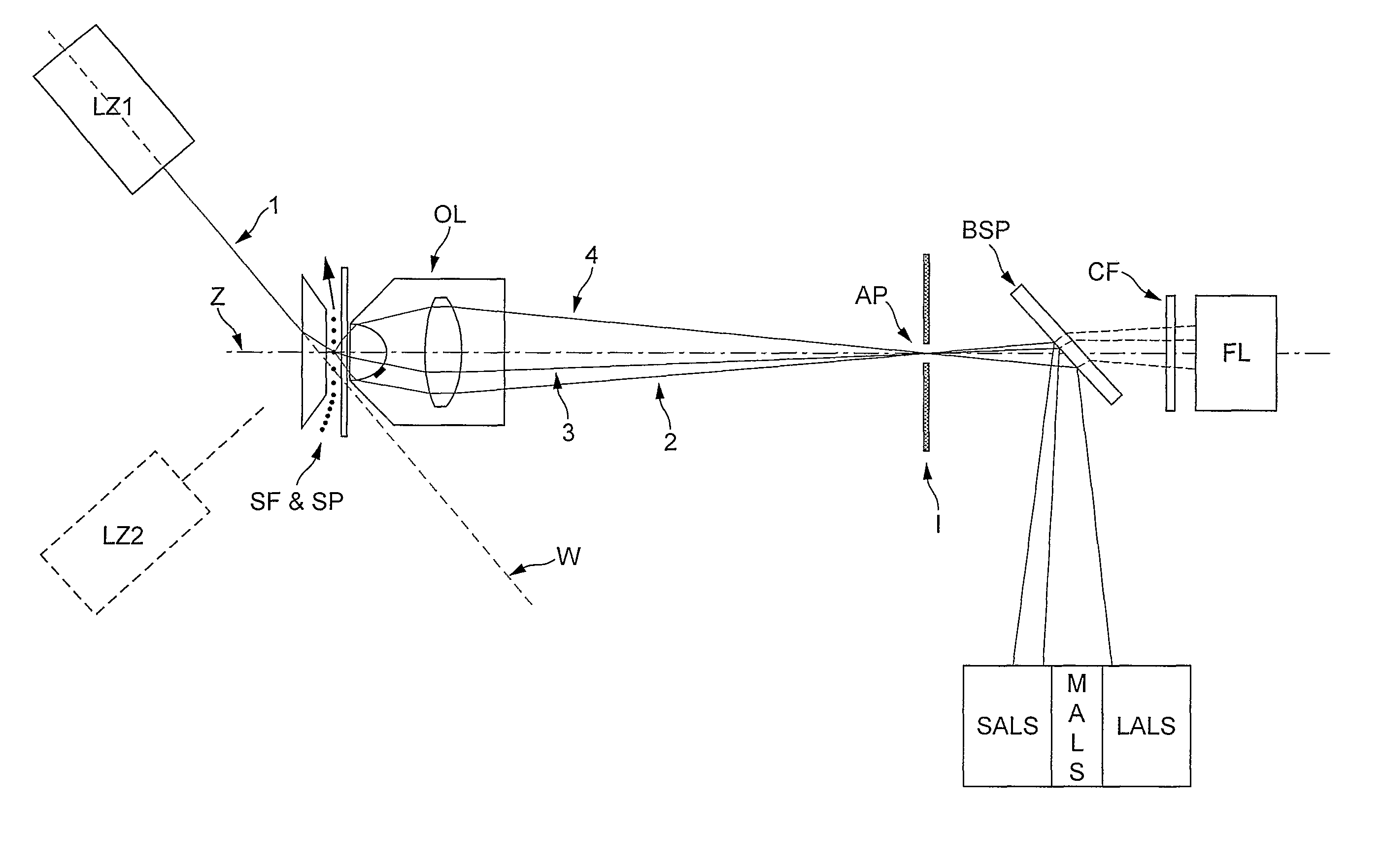Optical arrangement for a flow cytometer
a flow cytometer and optical arrangement technology, applied in the direction of measuring devices, material analysis through optical means, instruments, etc., can solve the problems of short working distance of high na microscope lenses, limited physical space around samples and flow cells, and inability to arrange, etc., to achieve convenient separation
- Summary
- Abstract
- Description
- Claims
- Application Information
AI Technical Summary
Benefits of technology
Problems solved by technology
Method used
Image
Examples
Embodiment Construction
[0026]Let us define:[0027]‘Region B’ as being the volume of the sample stream which is illuminated by the radiation source.[0028]‘Region A’ as the area of intersection of the radiation beam with the flow cell wall closest to the radiation source.[0029]‘Region C’ as the area of intersection of the radiation beam with the flow cell wall furthest from the radiation source.
[0030]The present invention provides a novel and heretofore unobvious system for optically counting, measuring and differentiating particles such as bacteria, archaea, viruses and blood cells, as they travel through a flow cell. The system enables measurements of fluorescence and a wide range of light scatter angles to be taken from particles through a high numerical aperture lens. Furthermore the system achieves excellent spatial filtering of light from the measured particles through the use of a beam stop to reduce optical noise.
[0031]An optical system may provide:[0032]collection of a wide range of scattering angle...
PUM
 Login to View More
Login to View More Abstract
Description
Claims
Application Information
 Login to View More
Login to View More - R&D
- Intellectual Property
- Life Sciences
- Materials
- Tech Scout
- Unparalleled Data Quality
- Higher Quality Content
- 60% Fewer Hallucinations
Browse by: Latest US Patents, China's latest patents, Technical Efficacy Thesaurus, Application Domain, Technology Topic, Popular Technical Reports.
© 2025 PatSnap. All rights reserved.Legal|Privacy policy|Modern Slavery Act Transparency Statement|Sitemap|About US| Contact US: help@patsnap.com



